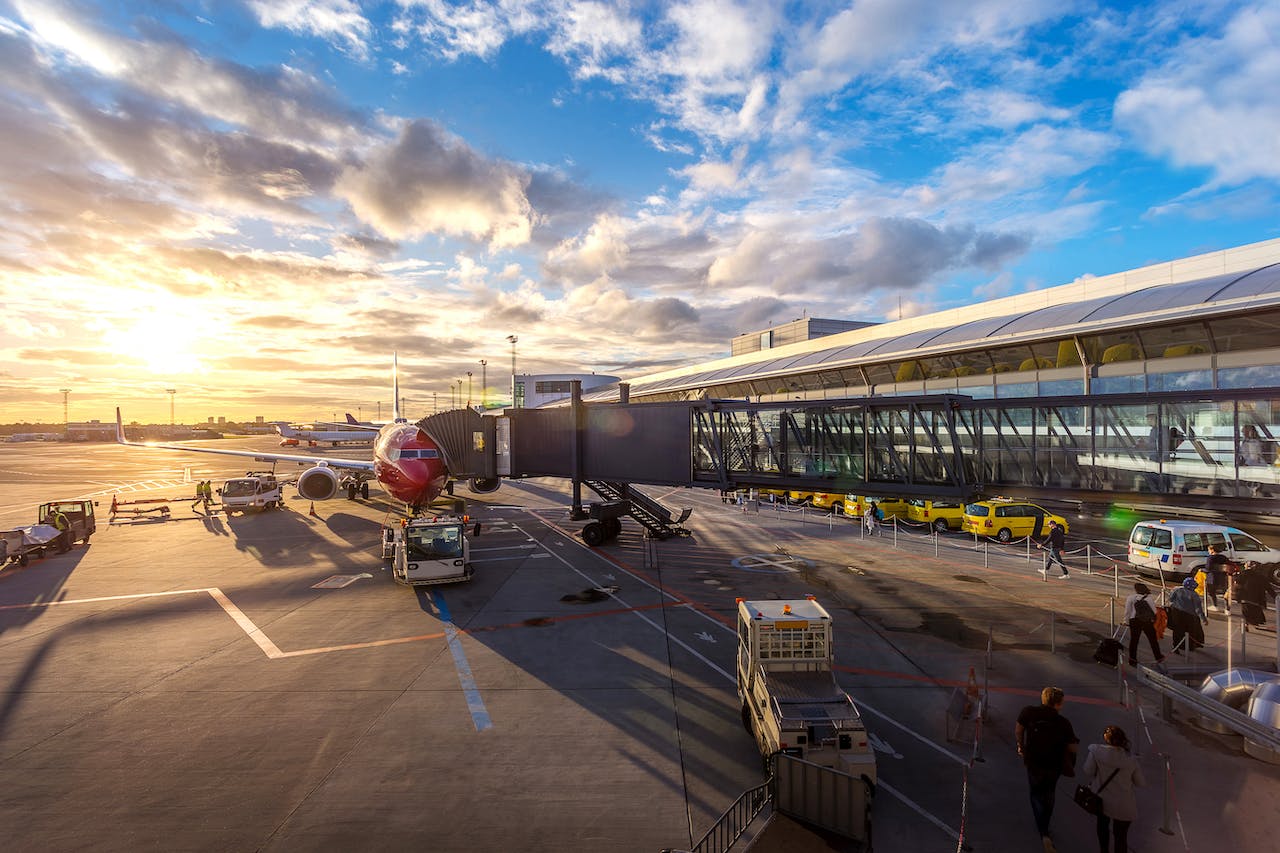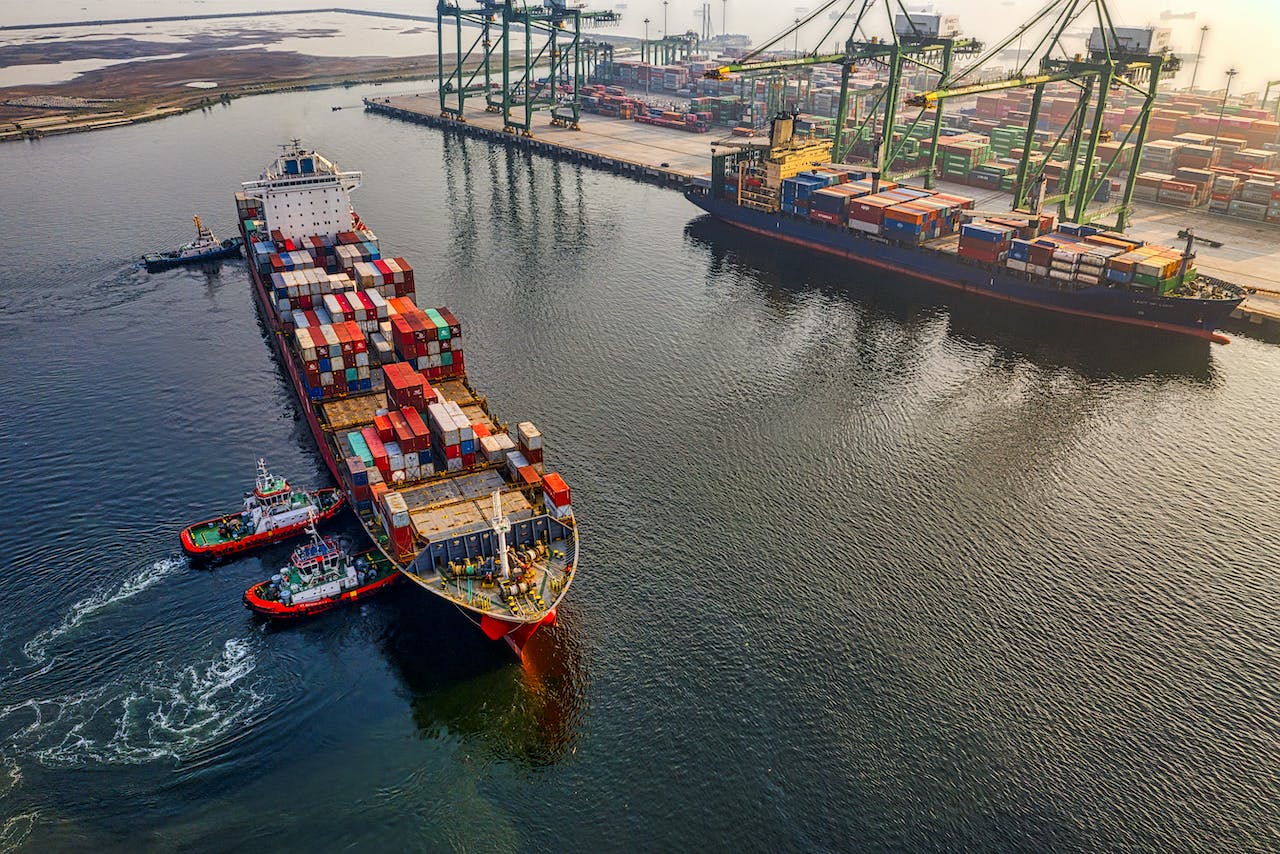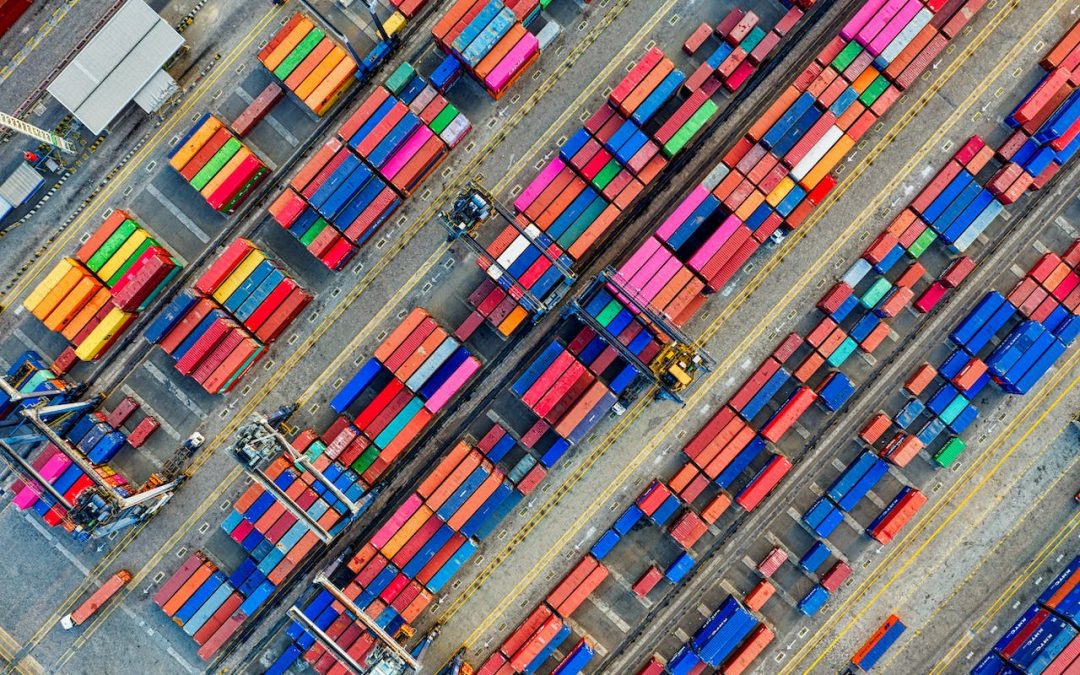Saat memutuskan antara angkutan udara dan laut, ada banyak hal yang harus dipikirkan.
Kecepatan, batasan, volume, biaya… Moda transportasi manakah yang paling sesuai untuk kiriman Anda? Ada banyak hal yang perlu dipertimbangkan. Jadi, kami telah menulis blog ini untuk melihatnya lebih dalam.
Semua Tentang Pengiriman Udara
Angkutan udara digunakan untuk sekitar 35% perdagangan dunia.
Jika Anda memilih angkutan udara untuk mengangkut barang Anda ke tujuan, kiriman Anda dimuat ke dalam pesawat dan diterbangkan dari satu tempat ke tempat lain.
Dari bandara tujuan, barang dapat dibawa pada tahap terakhir perjalanannya dengan truk atau kereta api karena moda transportasi ini biasanya dapat mendekat ke tujuan akhir.
Keuntungan Pengiriman Udara
Dengan mesin besar yang mendorong kapal udara melintasi atmosfer dan tidak ada lalu lintas yang menghalangi, kargo yang diangkut melalui udara dapat sampai ke tujuannya dengan cepat. Ini menjadikannya pilihan yang lebih baik untuk pengiriman yang sensitif terhadap waktu.
Angkutan udara juga sangat aman. Karena keamanan bandara sangat ketat, dan karena semua perjalanan biasanya tidak terganggu, risiko pencurian, kehilangan, atau kerusakan sangat kecil. Oleh karena itu, pengiriman dengan pesawat terbang cenderung sesuai dengan pengiriman yang bernilai tinggi dan rapuh.
Pengiriman dengan pesawat menawarkan waktu kedatangan dan keberangkatan yang dapat diandalkan, pelacakan yang fantastis, dan pengurangan waktu transit untuk pengiriman yang sesuai.
Batasan Pengiriman Udara
Meskipun angkutan udara cepat dan aman, hal ini memiliki beberapa pertimbangan.
Daftar teratas? Biaya. Angkutan udara adalah pilihan termahal di luar sana. Hal ini membuat banyak pengiriman tidak dapat dilakukan.
Berat dan ukuran barang Anda juga akan menentukan apakah angkutan udara tepat untuk Anda karena pembatasan yang ketat. Pembatasan hukum juga berbeda dari satu negara ke negara lain dan perlu dipertimbangkan terlebih dahulu untuk memastikan kepatuhan tetap terjaga dan penundaan dapat dihindari.

Semua Tentang Pengangkutan Laut
Angkutan laut, atau angkutan laut, menggunakan kapal kontainer untuk membawa kargo Anda dari satu pelabuhan ke pelabuhan lain dan merupakan salah satu cara paling umum untuk mengimpor dan mengekspor barang antar negara.
Kapal kontainer adalah kapal besar yang biasanya dapat menampung antara 10.000 dan 21.000 TEUs, atau satuan setara dua puluh kaki, yang merupakan ukuran yang digunakan untuk menggambarkan ukuran kontainer. Moda pengangkutan barang ini dapat digunakan untuk mengirimkan berbagai macam barang, termasuk makanan yang tidak mudah rusak dalam jumlah besar dan barang berat seperti mobil dan mesin.
Keuntungan Pengiriman Laut
Angkutan laut adalah cara pengiriman kargo curah dan kargo berat yang paling hemat biaya karena kapasitas kapalnya. Bahkan bea masuk dan PPN lebih sedikit jika Anda mengirim melalui laut.
Kapal kontainer adalah metode yang tepat untuk mengangkut barang-barang berat dan berukuran besar, dan pelabuhan memiliki semua peralatan untuk menangani barang-barang tersebut dan siap berangkat. Barang Anda aman, tersegel, dan terkunci di dalam wadahnya, serta terlindung dari unsur-unsur dalam perjalanan.
Angkutan laut juga merupakan pilihan yang lebih ekonomis karena kapal menggunakan bahan bakar jauh lebih sedikit selama perjalanan dibandingkan dengan moda transportasi lainnya.
Batasan Pengangkutan Laut
Tantangan angkutan laut dimulai dari kecepatannya. Perjalanan laut lambat dibandingkan dengan metode lain untuk mengantarkan barang Anda ke tempat tujuan.
Dan sayangnya, Anda lebih mungkin mengalami penundaan karena kondisi cuaca dan masalah pelabuhan. Tujuan Anda juga lebih terbatas karena bagian dunia tertentu tidak dapat diakses, seperti negara yang tidak memiliki daratan, dan ini mungkin berarti angkutan laut tidak tepat untuk Anda.

Jadi, Apa Pertimbangan Utamanya?
Moda pengiriman yang Anda pilih sangat bergantung pada apa yang Anda kirim. Berikut beberapa faktor yang perlu Anda pertimbangkan sebelum memutuskan.
Kecepatan
Seberapa cepat barang Anda harus sampai ke tujuan? Jika jawabannya terjadi kemarin, angkutan laut akan menjadi pilihan yang terlalu lambat. Tergantung pada perjalanannya, kapal kontainer dapat memerlukan waktu antara 2 hingga 6 minggu untuk mengirimkan kiriman Anda dengan aman.
Di sisi lain, angkutan udara dapat menyediakan pengiriman pada hari yang sama.
Jenis Barang
Apa yang kamu kirim? Jika itu adalah sejumlah mesin cuci, maka Anda tidak akan membawanya ke dalam pesawat karena batasan ukuran dan berat… Pengiriman mudah rusak? Angkutan laut tidak cocok karena waktu transit yang lama, dan angkutan udara paling cocok untuk Anda. Teknologi bernilai tinggi juga sering dikirim melalui udara.
Biaya
Biaya memainkan peran besar dalam keputusan bisnis apa pun, termasuk metode pengiriman yang tepat untuk kiriman Anda.
Angkutan laut jauh lebih murah daripada angkutan udara, tetapi hanya jika Anda atau pelanggan Anda senang menunggu barang Anda dan jika jenis kargo Anda memungkinkan perjalanan jauh.
Mana yang Harus Saya Gunakan?
Jika angkutan udara dan laut merupakan solusi pengiriman yang cocok untuk barang khusus Anda, hal ini tergantung pada argumen kecepatan vs biaya. Ingin menjaga biaya pengiriman tetap rendah? Pilihlah angkutan laut. Ingin barang Anda cepat sampai tujuan? Angkutan udara cocok untuk Anda.
Jika tidak, Anda mungkin mendapati bahwa kargo Anda lebih cocok untuk satu moda transportasi dibandingkan moda transportasi lainnya. Misalnya, barang-barang yang mudah rusak harus diangkut dengan pesawat terbang dibandingkan dengan kontainer di kapal karena barang-barang tersebut akan rusak dalam perjalanan jauh. Dalam kasus ini, tidak ada kesulitan dalam memilih moda angkutan; keputusan Anda telah dibuat untuk Anda!
Pengiriman Barang Tidak Selalu Jelas
Ada beberapa faktor yang mempengaruhi pengambilan keputusan pengiriman, dan hal itu dapat membuat stres. Tapi coba tebak… Anda tidak perlu mengkhawatirkan detailnya.
Mengapa?
Karena untuk itulah kami ada di sini! Milenium dapat melihat apa yang terbaik bagi Anda, kargo Anda, dan anggaran Anda. Hubungi kami hari ini untuk mulai menggelindingkan bola.

